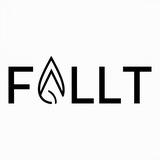tg-me.com/fallt_tec/160
Last Update:
Top 6 API Architecture Styles
1. REST (Representational State Transfer)
- Description: REST is an architectural style that uses standard HTTP methods (GET, POST, PUT, DELETE) for communication. It emphasizes stateless interactions and is resource-oriented, where resources are identified by URIS.
- Use Cases: Web services, mobile applications, and CRUD operations.
2. GraphQL
- Description: GraphQL is a query language for APIs that allows clients to request exactly the data they need. It provides a single endpoint for fetching data and allows for more dynamic interactions.
- Use Cases: Complex applications needing flexible data retrieval, such as social media platforms and dashboards.
3. WebSockets
- Description: WebSockets provide a full-duplex communication channel over a single TCP connection. They enable real-time communication between the client and server.
- Use Cases: Real-time applications like chat apps, online gaming, and collaborative tools.
4. Webhooks
- Description: Webhooks are user-defined HTTP callbacks
that are triggered by specific events in a web application. When an event occurs, a request is sent to a predefined URL.
- Use Cases: Integrating different systems, notifications, and event-driven architectures.
5. gRPC (gRPC Remote Procedure Calls)
- Description: gRPC is an open-source RPC framework that
uses HTTP/2 for transport and Protocol Buffers as the interface description language. It allows for efficient communication between services.
- Use Cases: Microservices architecture, high-performance applications, and inter-service communication.
6. MQTT (Message Queuing Telemetry Transport)
Description: MQTT is a lightweight messaging protocol
designed for low-bandwidth, high-latency networks, often used in IoT applications. It uses a publish/subscribe model.
- Use Cases: IoT devices, remote monitoring, and real-time analytics.
Each of these API architecture styles has its strengths and weaknesses, making them suitable for different scenarios. The choice of which to use often depends on
:)
BY Fallt<Dev/>⚠️
Warning: Undefined variable $i in /var/www/tg-me/post.php on line 283
Share with your friend now:
tg-me.com/fallt_tec/160
